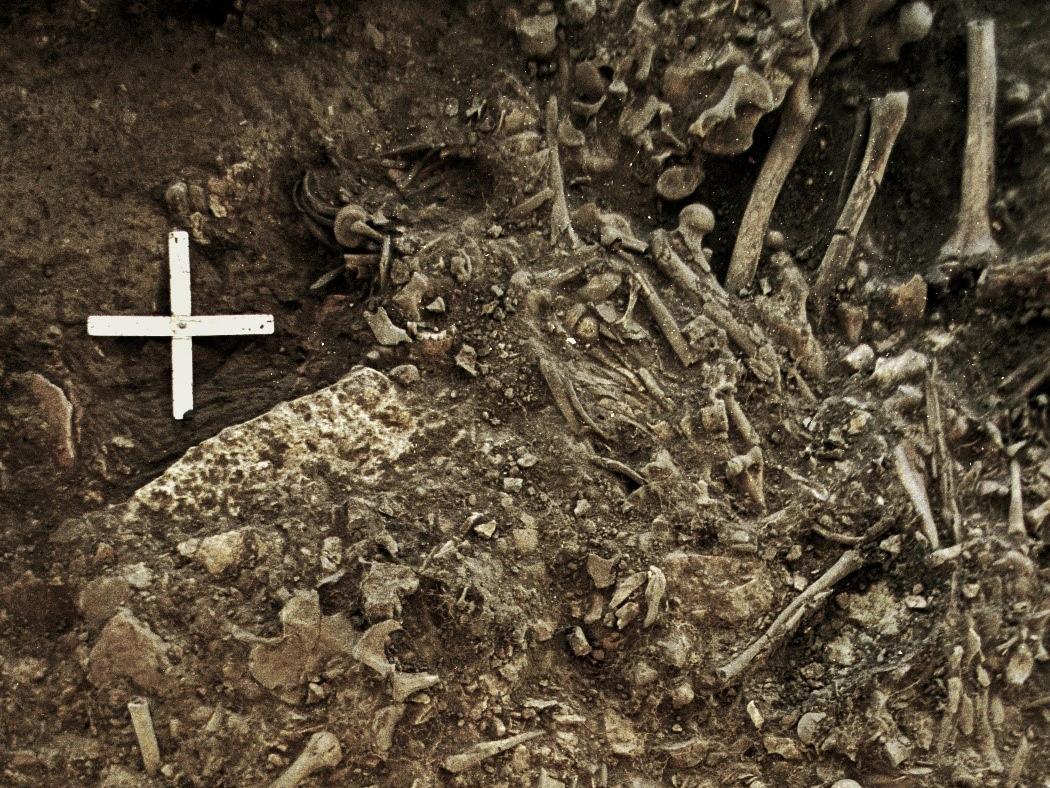Ancient plague may have wiped out Stone Age farmers in Europe
Scientists think 'mega-settlements' provided perfect conditions for new disease to evolve

A new type of plague extracted from 5,000 year-old human remains may have played a role in wiping out Europe’s Stone Age farmers.
Scientists extracted the ancient bacteria from the genetic material of a 20-year-old woman at a site in Sweden.
Not only do they think this sample is the closest thing ever identified to the origin of the infamous disease, the scientists say it may help solve a long-standing prehistoric mystery.
Massive migrations from the Eurasian steppes around this time led to a complete replacement of the Neolithic farming communities that had previous inhabited the continent.
The fate of the region’s original inhabitants has been the sources of much debate. Previously experts have suggested the new arrivals brought the plague with them, wiping out the farmers as the disease moved with its hosts.
However, the new strain discovered in Sweden appears to have emerged around 5,700 years ago, before these migrations began.
This suggests the disease swept the continent earlier, after evolving in the cramped confines of the “mega settlements” of 10,000-20,000 inhabitants that were being built at this time.
"These mega-settlements were the largest settlements in Europe at that time, 10 times bigger than anything else,” said Dr Simon Rasmussen, a genomics researcher at the Technical University of Denmark.
“They had people, animals, and stored food close together, and, likely, very poor sanitation. That's the textbook example of what you need to evolve new pathogens.”
"We think our data fit. If plague evolved in the mega-settlements, then when people started dying from it, the settlements would have been abandoned and destroyed.”
As the plague evolved, it would have spread around the continent along newly developed trade routes made possible by wheeled transport.
Ultimately, it would have arrived in the northernmost parts of Europe, and the small village in which the woman sampled by this study lived.
The plague has devastated Europe for millennia, from outbreaks in the Bronze Age through to the Black Death pandemic that killed up to 60 per cent of the continent’s population in the Middle Ages.

Dr Rasmussen and his team are trying to track down the earliest strains of plague to emerge, using ancient DNA strands to trace its lineage from the relatively harmless bacteria that preceded it.
The strain still in existence today diverged from other varieties around 5,000 years ago, and the 5,700-year-old specimen is likely a closer representation of those implicated in the first outbreaks.
Though Dr Rasmussen says they are yet to find a “smoking gun” for their theory about early mega-settlement outbreaks, they would like to test remains from those sites in order to test the idea.
These results were published in the journal Cell.
Join our commenting forum
Join thought-provoking conversations, follow other Independent readers and see their replies
Comments